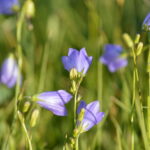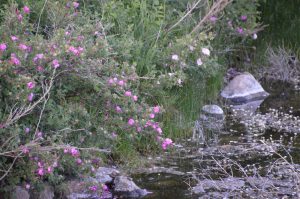Rangeland and Riparian Health: New web page!

Editor’s note: Relevant and up-to-date information that had been available on Foragebeef.ca is gradually being added to BeefResearch.ca. (More information). The new Rangeland and Riparian Health page, which is previewed below, is one example. Further webpages will be added or updated on BeefResearch.ca to include the valuable content from Foragebeef.ca, ensuring that information remains freely available online. Completion is expected by Spring 2020.
Rangeland, or range, is land supporting native or introduced vegetation that can be grazed and is managed as a natural ecosystem. Rangeland includes grassland, grazeable forestland, shrubland, pastureland and riparian areas.
Healthy rangelands:
- produce forage for livestock and wildlife
- maintain and protect soil from erosion
- capture and release water
- cycle nutrients and energy, and
- maintain biological diversity.

Learning to recognize range plants and their role in the ecosystem is key to good range management. Range plants can be grouped based on various characteristics including plant type, season of growth, origin, response to grazing and forage value. Plant type species groups have similar physical characteristics and include:Grasses: herbaceous plants with narrow, long, parallel-veined leaves and hollow, jointed stems (e.g. wheatgrasses, bluestems, fescues)

Grass-like plants: similar to grasses but have solid stems (not hollow) that are often three-sided and not jointed. Leaves are no different from grasses. (e.g. sedges, rushes)Forbs: herbaceous, broad-leaved plants with annual tops and leaves with net-like veins. Includes many kinds of range weeds and flowers (e.g., vetches, yarrow, club moss)
Shrubs: woody, often deciduous perennials with stems that live over winter and branch out from the base or at ground level (e.g., sagebrush, winterfat, snowberry)

A riparian zone is the area adjacent to streams, rivers, lakes, and wetlands, where the vegetation and soils are strongly influenced by the presence of water. Healthy riparian areas trap and store sediment, build and maintain streambanks, store flood water, recharge groundwater, act as a filter and buffer to maintain water quality, reduce and dissipate stream energy to slow erosion, maintain biodiversity, provide wildlife habitat, and produce forage.
Unhealthy riparian areas are characterized by weeds, reduced forage production, damaged shrub growth, down cutting and erosion of the channel, slumping banks, soil exposure, low water table and decreased storage capacity with few fish or wildlife present.
Riparian areas are extremely productive components of a grazing program and with proper management cattle, grass and waterways can coexist in a long-term sustainable ecosystem. However, because riparian areas are also important areas for protecting water quality, they are very sensitive to uncontrolled grazing. If access isn’t controlled, cattle will concentrate in a riparian area because of water, salt, shade, or forage availability.
To learn more about rangeland and riparian health visit the new web page.
Click here to subscribe to the BCRC Blog and receive email notifications when new content is posted.
The sharing or reprinting of BCRC Blog articles is welcome and encouraged. Please provide acknowledgement to the Beef Cattle Research Council, list the website address, www.BeefResearch.ca, and let us know you chose to share the article by emailing us at info@beefresearch.ca.
We welcome your questions, comments and suggestions. Contact us directly or generate public discussion by posting your thoughts below.